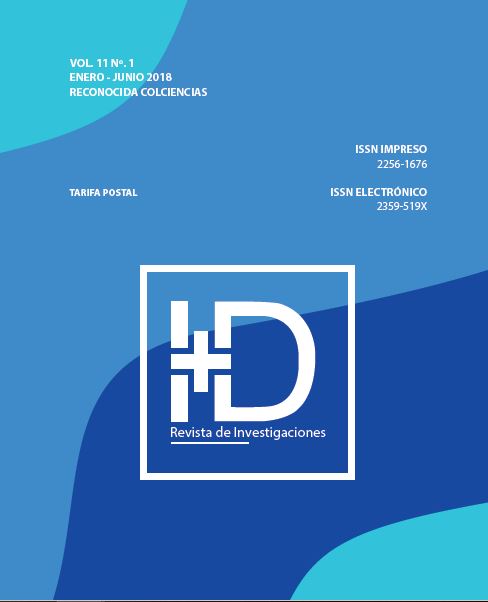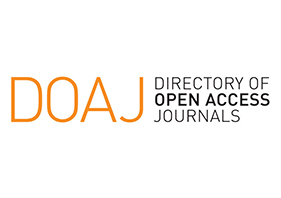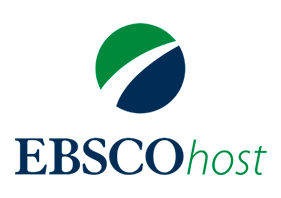Business model for supply chain management: a review and bibliometric analysis
DOI:
https://doi.org/10.33304/revinv.v11n1-2018004Keywords:
Business model, Suply Chain, Bibliometric analysisAbstract
The field of management models of supply chains of organizations has evolved rapidly and it has gained popularity and importance in the research community. This research makes a revision on the literature that has been developed about the business models for the supply chain management, with the purpose of providing a profound vision in the field. Using bibliometrics analysis the research evaluated 665 articles published in the last 10 years, and found the main authors, organizations and key subjects of the research related to the field of study.Downloads
References
Al-Debei, M. M., El-Haddadeh, R., & Avison, D. (2008). Defining the business model in the new world of digital business. School of Information Systems, Computing and Mathematics.
Amit, R., & Zott, C. (2001). Value creation in E-business. Strategic Management Journal, 22(6–7), 493–520. https://doi.org/10.1002/smj.187
Andersson, B., Bergholtz, M., Edirisuriya, A., Ilayperuma, T., Johannesson, P., Gordijn, J., … others. (2006). Towards a reference ontology for business models. Conceptual Modeling-ER 2006, 482–496.
Ayers, J. B. (2006). Handbook of supply chain management. CRC Press.
Ardila, Y. & Uribe, H (2017). Modelo de negocios para comercialización de películas y recubrimientos comestibles en Bucaramanga. I+D Revista de Investigaciones, 10(2), pp-pp
Bakas, O., & Hoff, A. (2010). Business model innovations: The case of intelligent goods. In Proceedings of APMS 2010 - International Conference on Advances in Production Management Systems.
Ballou, R. H. (2004). Logística: Administración de la cadena de suministro. Pearson
Blanchard, D. (2010). Supply chain management best practices. John Wiley & Sons.
Camponovo, G., & Pigneur, Y. (2003). Business Model Analysis Applied to Mobile Business. In ICEIS (4) (pp. 173–183).
Chen, Y.-H., Lin, T.-P., & Yen, D. C. (2014). How to facilitate inter-organizational knowledge sharing: The impact of trust. Information and Management, 51(5). https://doi.org/10.1016/j.im.2014.03.007.
Choon Seong Leem, Hyung Sik Suh, & Dae Seong Kim. (2004). A classification of mobile business models and its applications. Industrial Management & Data Systems, 104(1), 78–87. https://doi.org/10.1108/02635570410514115
Chu, K.-F., & Cheung, C.-F. (2006). A manufacturing supply chain business model and its implementation in a plastics manufacturing company. Materials Science Forum (Vol. 532–533).
DayR. A. (2005). Como Escribir Y Publicar Trabajos Cientificos. Pan American Health Org.
Díaz, R. A. (2014). Marketing y las nuevas tecnologías de información, aplicadas en los negocios. I+ D REVISTA DE INVESTIGACIONES, 4(2), 34–48.
Dubosson-Torbay, M., Osterwalder, A., & Pigneur, Y. (2002). E-business model design, classification, and measurements. Thunderbird International Business Review, 44(1), 5–23. https://doi.org/10.1002/tie.1036
Elsevier. (2017). Scopus | The largest database of peer-reviewed literature | Elsevier. Retrieved February 22, 2017, from https://www.elsevier.com/solutions/scopus
Er, M., & MacCarthy, B. (2006). Managing product variety in multinational corporation supply chains: A simulation study. Journal of Manufacturing Technology Management, 17(8), 1117–1138.
Fan, S., Xu, X., Liang, C., & Guo, J. (2015). Construction of Forward and Reverse Logistics Network and Route Planning of Fresh Food E-Commerce Enterprises. In Proceedings - 12th IEEE International Conference on E-Business Engineering, ICEBE 2015. https://doi.org/10.1109/ICEBE.2015.35
Fan, Siyuan, Xu, X., Liang, C., & Guo, J. (2015). Construction of Forward and Reverse Logistics Network and Route Planning of Fresh Food E-Commerce Enterprises. In e-Business Engineering (ICEBE), 2015 IEEE 12th International Conference on (pp. 160–165). IEEE.
Giannice, S. G. (2013). La logística y su esencia en los modelos de negocio 1 congreso internacional sobre nuevas tendencias de la logística empresarial.
Hsieh, C.-S., & Hung, J.-W. (2009). Integration agent negotiation and data global consistency forms automatic and none Bullwhip effect supply chain. WSEAS Transactions on Information Science and Applications, 6(6), 1037–1050.
Humphreys, P., McIvor, R., & Cadden, T. (2006). B2B commerce and its implications for the buyer-supplier interface. Supply Chain Management, 11(2). https://doi.org/10.1108/13598540610652528
Jacob-John, J., & Veerapa, N. K. (2016). Integrating responsibility within food supply chains - A conceptual model. Acta Horticulturae (Vol. 1132). https://doi.org/10.17660/ActaHortic.2016.1132.13
Jukka Kallio, Markku Tinnilä, & Anne Tseng. (2006). An international comparison of operator‐driven business models. Business Process Management Journal, 12(3), 281–298. https://doi.org/10.1108/14637150610667962
Koudal, P., & Wellener, P. (2003). Digital loyalty networks: continuously connecting automakers with their customers and suppliers. Strategy & Leadership, 31(6). https://doi.org/10.1108/10878570310505541
Leiden University. (2010). VOSviewer - Visualizing scientific landscapes. Retrieved June 8, 2017.
Li, H., & Englert, D. (2010). Conceptual framework for collaborative business based on service oriented grid computing. In ICIME 2010 - 2010 2nd IEEE International Conference on Information Management and Engineering (Vol. 1). https://doi.org/10.1109/ICIME.2010.5478122
Lin, F.-R., & Shaw, M. J. (1998). Reengineering the order fulfillment process in supply chain networks. International Journal of Flexible Manufacturing Systems, 10(3). https://doi.org/10.1023/A:1008069816606
Liu, Z., & Shi, Y. (2007). The Emergence of International Outsourcing Agents in China: A New Type of Player in International Supply Networks. Journal of Asia Business Studies, 2(1). https://doi.org/10.1108/15587890780001278
Lukić, J., Radenković, M., Despotović-Zrakić, M., Labus, A., & Bogdanović, Z. (2017). Supply chain intelligence for electricity markets: A smart grid perspective. Information Systems Frontiers, 19(1). https://doi.org/10.1007/s10796-015-9592-z
Magretta, J. (2002). Why business models matter. Retrieved from http://repository.binus.ac.id/2009-2/content/A0154/A015481231.pdf
Manthou, V., Vlachopoulou, M., & Folinas, D. (2004). Virtual e-Chain (VeC) model for supply chain collaboration. International Journal of Production Economics, 87(3). https://doi.org/10.1016/S0925-5273(03)00218-4
Mentzer, J. T., DeWitt, W., Keebler, J. S., Min, S., Nix, N. W., Smith, C. D., & Zacharia, Z. G. (2001). Defining supply chain management. Journal of Business Logistics, 22(2), 1–25.
Osterwalder, A., Pigneur, Y., & Tucci, C. L. (2005). Clarifying business models: Origins, present, and future of the concept. Communications of the Association for Information Systems, 16(1), 1.
Panou, K. (2015). Assessing financial viability of the freemium model for supply chain service value networks: a case study of the container management service industry. International Journal of Integrated Supply Management, 9(3), 137–177.
Pinto, T. Y. A., & Quintero, H. C. U. (2017). Modelo de negocios para comercialización de películas y recubrimientos comestibles en Bucaramanga. I+ D Revista de Investigaciones, 10(2), 15–25.
Prause, G. (2015). Sustainable business models and structures for industry 4.0. Journal of Security and Sustainability Issues, 5(2). https://doi.org/10.9770/jssi.2015.5.2(3)
Rabe, M., & Weinaug, H. (2016). Distributed analysis of financial and logistic services for manufacturing supply chains. In 2007 IEEE International Technology Management Conference, ICE 2007.
Rajala, R., & Westerlund, M. (2005). Business Models: A new perspective on knowledge-intensive services in the software industry. BLED 2005 Proceedings, 10.
Rehfeldt, M., & Turowski, K. (2000). Business models for coordinating next generation enterprises. In Proceedings - Academia/Industry Working Conference on Research Challenges 2000: Next Generation Enterprises: Virtual Organizations and Mobile/Pervasive Technologies, AIWORC 2000. https://doi.org/10.1109/AIWORC.2000.843288
Rehfeldt, M., & Turowski, K. (2000). Business models for coordinating next generation enterprises. In Proceedings - Academia/Industry Working Conference on Research Challenges 2000: Next Generation Enterprises: Virtual Organizations and Mobile/ Pervasive Technologies, AIWORC 2000. https://doi.org/10.1109/AIWORC.2000.843288
Röglinger, M., Pöppelbus s, J., & Becker, J. (2012). Maturity models in business process management. Business Process Management Journal, 18(2), 328– 346.
Shamsuzzoha, A., Barros, A., Costa, D., Azevedo, A., & Helo, P. (2014). Conceptual reference model for virtual factory: Potentials for collaborative business. IFIP Advances in Information and Communication Technology (Vol. 434).
Stähler, P. (2002). Business models as an unit of analysis for strategizing. In International workshop on business models, Lausanne, Switzerland (pp. 4–5).
Tan, K.-S., Ahmed, M. D., & Sundaram, D. (2009). Sustainable warehouse management. In Proceedings of the International Workshop on Enterprises & Organizational Modeling and Simulation (p. 8). ACM. Retrieved from http://dl.acm.org/citation.cfm?id=1750415
The Vantage Point. (2012). Vantage point. U.S.: Search Technology. Retrieved February 22, 2017, from https://www.thevantagepoint.com
Tian-Min, C. (2009). Constructing Collaborative E-business Platform to Manage Supply Chain. In 2009 International Conference on Information Management, Innovation Management and Industrial Engineering (Vol. 2, pp. 406–409). https://doi.org/10.1109/ICIII.2009.255
Vurro, C., Russo, A., & Perrini, F. (2009). Shaping sustainable value chains: Network determinants of supply chain governance models. Journal of Business Ethics, 90, 607–621.












